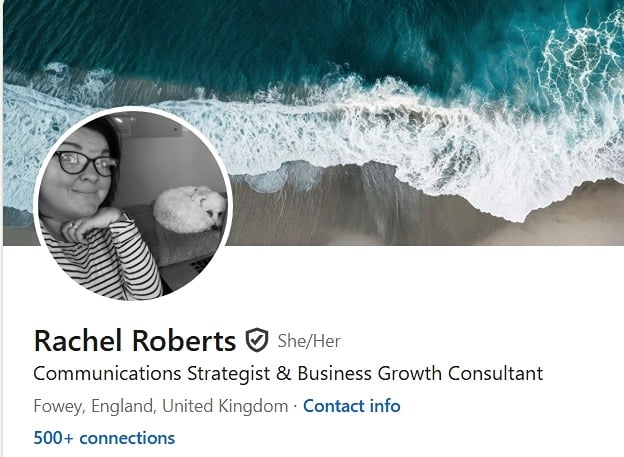How evolving consumer behaviour and audience fragmentation will shape the future of media planning.

Photo by Lum3n
Hello! This post is the fourth instalment of a six-part series I’m creating as part of the Global Media Planning module for my Masters in Marketing and Digital Communications. Each instalment will tackle a different question from the assignment brief, and I’ll be sharing my progress along the way. The final assignment submission will bring everything together by focusing on three of the most important questions. Whether you’re interested in global media planning or just curious about the behind-the-scenes of a master’s assignment, I hope you find these insights useful. Thanks for following along!

If you're working in media or marketing today, you're probably feeling the pressure of a rapidly shifting landscape - I certainly am. The traditional approach of casting a wide net to achieve mass appeal is proving less effective as consumer behaviour evolves in ways we're still trying to understand.
Consider this - people are now active on more than seven digital platforms daily (Statista 2024). That's not just channel diversity, that's fundamental fragmentation of attention and engagement.
Understanding True Fragmentation
Fragmentation isn't just about having more channels to manage, though that's certainly part of it. What we're seeing is consumers inhabiting entirely different digital ecosystems simultaneously. While 71% of UK adults get their news online and 70% still watch TV, they're no longer sharing the same experiences or cultural touchpoints (Elkady 2023).
This divide becomes even more pronounced with younger audiences. 81% of UK teens consider YouTube their primary platform, with half remaining online almost constantly (Statista 2024). Each platform has developed its own culture, content formats, and engagement patterns, making it nearly impossible for a single message to resonate universally.
This challenges the long-held marketing principle of "fishing where the fish are" (Forbes Agency Council 2022; Benj Kaye Dixons 2010). The logic was straightforward: target the largest pools of people. Today, those "fish" are scattered across countless digital environments, each with distinct dynamics and user expectations.
Rethinking Attention in the Digital Age
In this fragmented landscape, attention has become the most valuable commodity. Karen Nelson-Field, a leading authority on media effectiveness, argues that "attention availability" should be our primary metric, not just whether an ad was displayed, but whether it was genuinely noticed (Nelson-Field 2025).
Having worked with brands struggling to break through the noise, I've seen firsthand how programmatic advertising can deliver impressive impression counts without guaranteeing engagement. However, Nelson-Field's research reveals something fascinating about passive attention: even brief exposures can drive measurable brand outcomes. Her studies show that just 1.5 seconds of active attention is sufficient to encode memory and deliver ROI (VCCP Media and Nelson-Field 2025).
This challenges our assumptions about engagement. Those users scrolling quickly through feeds aren't necessarily lost opportunities, they're still absorbing brand information, even without clicking or actively engaging. Different platforms generate different types of attention. TikTok requires brands to capture interest within seconds, while streaming services offer opportunities for deeper storytelling (Nelson-Field 2025).
The Creative Strategy Evolution
Success in this environment requires brands to fundamentally rethink their creative approach. Content must be adapted to each platform's unique dynamics: quick, visually compelling content for short-form video; detailed narratives for streaming platforms; interactive features where users expect participation.
From my experience, the biggest mistake brands make is over-personalisation. Excessive tailoring can dilute what makes a brand memorable and distinctive. Nelson-Field's research emphasises that distinctiveness, standing out rather than fitting in, remains crucial for long-term brand success (Nelson-Field 2025).
Navigating Privacy and Generational Complexity
Privacy regulations add another layer of complexity to media planning. With third-party cookies disappearing, brands must invest in building direct relationships with audiences through owned channels (The Economist 2024). This means email lists, apps, and communities where they control both data and engagement.
Generational differences compound these challenges. Older and younger audiences don't just prefer different platforms, they inhabit fundamentally different digital realities. The assumption that a single message can effectively bridge this gap is becoming increasingly unrealistic.
Strategic Recommendations
The way forward requires abandoning one-size-fits-all approaches in favour of nuanced, platform-specific strategies. For fragmented attention, develop creative content that aligns with each platform's unique user behaviours. For passive attention, optimise for brief but effective exposures. For privacy constraints, build owned data assets and cultivate direct audience relationships.
Looking ahead, artificial intelligence will play an increasingly important role in predicting fragmentation patterns and enabling real-time optimisation of media plans (Marketing Week 2025). However, ethical considerations around privacy and data use must remain central to these developments.
The Bottom Line
We're witnessing a fundamental shift from mass-market thinking to nuanced, platform-specific strategies. Success in this environment depends on capturing genuine attention, maintaining brand distinctiveness, and building trust-based relationships with audiences.
The brands that thrive will be those that embrace this complexity rather than fighting it. They'll invest in creativity, build direct relationships with their audiences, and accept that modern media planning requires equal parts strategy, psychology, and adaptive thinking.
The question isn't whether this new reality is more challenging than traditional approaches, it certainly is. The question is whether we're prepared to evolve our thinking and practices to fish in multiple ponds simultaneously, rather than casting our nets in the same old waters where we wish our audience still gathered.
Thanks so much for reading. I’d really love to hear what you think, whether you agree, disagree, or just want to chat about media planning (or assignment writing!). Feel free to comment on my LinkedIn posts (where I’ll be sharing each part) or drop me an email. Your feedback will be a huge help as I decide which three posts to polish up for my final assignment. Looking forward to connecting!

References
Benj Kaye, Head of Advertising Dixons 2010 - a cheeky reference to a former colleague who regularly quoted 'fish where the fish are'.
Elkady A (2023) Why AI is 'drastically improving' the effectiveness of media planning. The Media Leader, 10 May. Available at: https://uk.themedialeader.com/why-ai-is-drastically-improving-the-effectiveness-of-media-planning/ (Accessed: 25 June 2025).
Forbes Agency Council (2022) The evolving role of media planning in a fragmented landscape. Forbes, 15 March. Available at: https://www.forbes.com/councils/forbesagencycouncil/2025/05/12/16-important-media-trends-impacting-the-pr-landscape-in-2025/ (Accessed: 1 July 2025).
Marketing Week (2025) Dr Karen Nelson-Field: Uniting creative, media and branding is the “perfect nirvana”. Marketing Week, 5 June. Available at: https://www.marketingweek.com/attention-hacking-creative-media/ (Accessed: 1 July 2025).
Miles L (2024) On Device Manifesto: Embrace media fragmentation. IAB UK, 27 June. Available at: https://www.iabuk.com/member-content/device-manifesto-embrace-media-fragmentation (Accessed: 25 June 2025).
Nelson-Field K (2025) The Missing “Availability”. WARC Opinion, 20 May. Available at: https://www.warc.com/newsandopinion/opinion/the-missing-availability/en-gb/7050 (Accessed: 1 July 2025).
Nechushta S (2024) Audience Fragmentation: Navigating the Shifting Landscape of Media Consumption. Global Media Journal, 22(70), pp. 1–10. Available at: https://www.globalmediajournal.com/open-access/audience-fragmentation-navigating-the-shifting-landscape-of-media-consumption.pdf (Accessed: 1 July 2025).
Statista (2024) Average number of digital platforms used daily by consumers. Available at: https://www.statista.com/ (Accessed: 1 July 2025).
The Economist (2024) AI is turning the ad business upside down. The Economist, 18 June. Available at: https://www.economist.com/business/2025/06/18/ai-is-turning-the-ad-business-upside-down (Accessed: 25 June 2025).
VCCP Media and Nelson-Field K (2025) Hacking the Attention Economy: VCCP Media and Dr Karen Nelson-Field reveal 1.5 second formula for effective digital advertising. Available at: https://www.vccp.com/uk/news/2025/may/hacking-the-attention-economy-vccp-media-and-dr-karen-nelson-field-reveal-1-5-second-formula-for-effective-digital-advertising (Accessed: 1 July 2025).
Comments